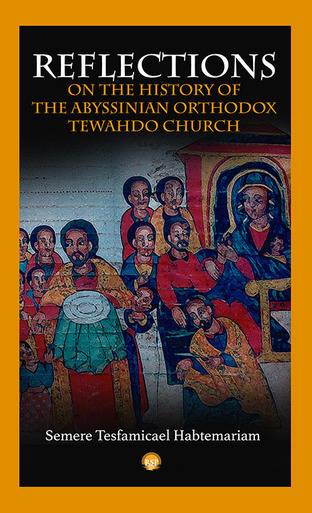About the book
This book tries to understand how Abyssinia (most of Modern-day Eritrea and Ethiopia) was favored by the three Abrahamic religions: Judaism, Christianity and Islam, and how the Orthodox Tewahdo Church has evolved to be the source of glory and quintessential identity of the people and country.
The Orthodox Tewahdo Church is the oldest and most venerated institution in Abyssinia where the simple piety of the people has remained untouched throughout its long history. It is not only a religious institution but a repository of art, music, culture, poetry, and literature which has an immense influence on the very essence of Habesha identity. It is a “carrier of high culture” (Gebre-Medhin, 1989). To some degree, understanding the Tewahdo Church is similar to understanding the last 17 centuries of Abyssinian history and civilization. It is the unveiling of “this distinctive conglomerate and its forms and expressions” that “had long become the store-house of the cultural, political, and social life of the people” (Ullendorff, 1973, p. 93); and the unearthing of the Tewahdo fossil where Abyssinian history is ensconced. More importantly, it is also the religious story of how “the purest prayer of Orthodox Christendom” (Hansberry, 1974) had risen from the source of the Nile to the mouth where St. Mark planted his seed. It is the embodiment of the purest seeds of evangelism, the miraculous story of how the baptism of an Ethiopian eunuch on a pilgrimage to Jerusalem, had given birth to the baptism of millions of Abyssinians back home.
To those who have heard of, or had the good fortune of having read the writings of Philosopher/Emperor Zerayacob, and have had a modicum of knowledge of the various religious disputes in Abyssinian history; to those who have seen and marveled paintings at the Gondar Church of Debrebirhan Selassie, and to those who have had the rare privilege of listening to the sermons of Abune Yohannes at the Axum Tsion Church in the late 1960s near the end of Emperor Haile Selassie’s reign (as this reviewer had)….and to all the devout followers of the Ethiopian and Eritrean Orthodox faith, Semere’s book is a boon.
—Prof. Bereket Habte Selassie, author of Deliverance: A Tale of Colliding Passions and the Muse of Forgiveness
The author claims that a quest for knowledge and understanding of his culture is what lead him for writing this book. Semere, however, provided more than one expects from an outsider. The book is thoroughly researched and well-organized. It examines the values and principles of the Abyssinian Orthodox Tewahdo Church and its history in relation to Christianity in general and the history of the Horn of Africa in particular.
—Dr. Girma A. Demeke, author of The Origin of Amharic
Based on extensive research and well-written narrative, this book represents a significant addition to the existing body of knowledge on the evolution of the Orthodox Tewahdo Church; the basic tenets of its theology, liturgy and rituals; and the preeminent role the Church has played in conserving, defending and developing the multiple facets of Abyssinian literary culture for nearly seventeen hundred years. In a very real sense, the book connects, in systematic fashion.
—Ambassador Andebrhan Welde Giorgis, author of Eritrea at a Crossroads: A Narrative of Triumph, Betrayal and Hope
ABOUT THE AUTHOR
SEMERE TESFAMICAEL HABTEMARIAM is the author of Hearts Like Birds and numerous articles on issues mostly on the Horn of Africa ranging from politics to various social problems. He is an all-rounded personality: an engineer by profession, a political activist, a writer, and a critique. He was born in Eritrea and lives in Carrollton, Texas, with his wife and children.



































